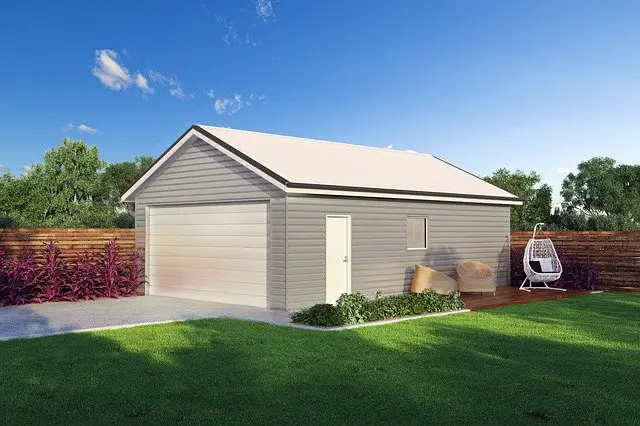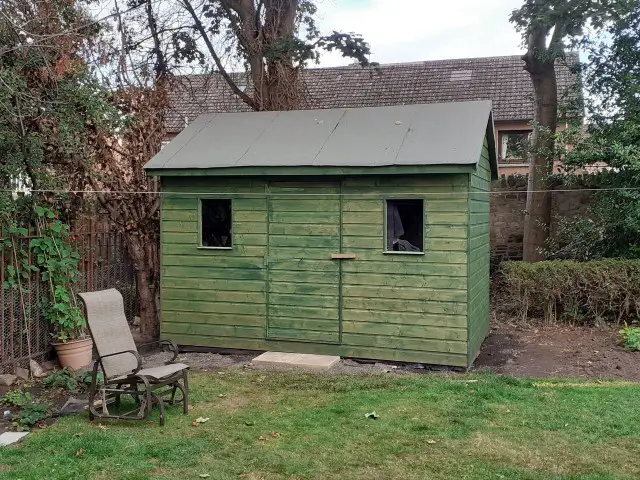Choosing the right garden shed is one of the first things that any first-time home buyer has to do if they have any size of garden or yard area at all to maintain. Bringing the garden tools into the house is generally not a good idea for marital harmony!
But how exactly do you choose the garden shed that is best for you? Or what do you look out for if you are choosing a shed for the first time – or maybe renewing the old shed that’s falling apart at the bottom of the garden?
The bottom line is that a good shed does not come cheap – even if you build it yourself using some great shed plans. So you really do not want to throw away your hard-earned money for a rubbish shed that is not fit for purpose.
The things that make a good garden shed are, it must be secure and water-tight. Made with a good frame and clad with laplarch or tongue & groove timber. Offers all the space you need to do your thing, and has enough shelfing and maybe a workbench installed.
With that in mind, I have set out a list of things to look out for if you are choosing a shed, barn or outhouse for your backyard. These are the highlights, further on I will go over this list in more detail.
- Shed location: Consider where exactly the shed must go in your garden. Is the area exposed to the weather. Is it under overhanging trees or other obstacles. Will it be seen by your friends and neighbours – is the look important to you?
- Security: Consider how secure your shed has to be – are you in a high crime rate area for instance? How valuable are the tools or even livestock and other materials you intend to keep in the shed.
- Construction: In a similar vein to the security of the shed, the construction is all-important if you are to resist burglary of your equipment. No use having a great security padlock on the front door if the burglar can simply crash in through the sides!
- Budget: Most of us have a certain budget or cost in mind when it comes to large purchase especially, and the garden shed could be considered a large purchase for most folks depending on the size of the shed.
- Potential use: Consider what you want your shed to be used for, or indeed what is the prime objective to having a shed in the first place. For instance if you are bringing on seed plants then a potting shed may be right for you. If you are intending storing a sit-on mower then you will need a larger shed with double doors for access
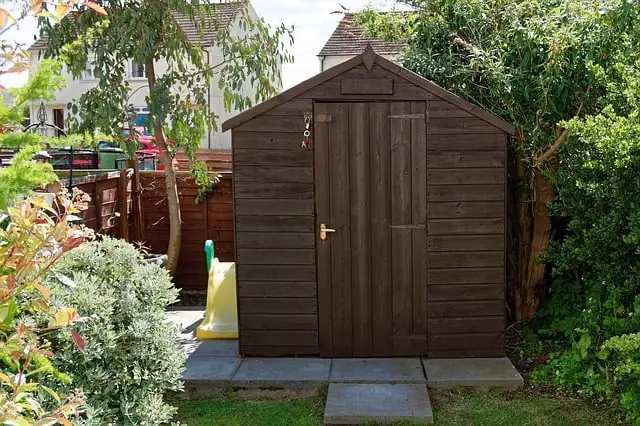
These bullet points highlight what I consider to be the most important considerations that would be applicable to most folks considering a garden shed for the first time especially.
Now to look at these points in a bit more detail, and make an informed decision when choosing to buy a garden shed.
Where to put a garden shed – Shed location
The correct location of a garden shed is determined by a number of factors including…
- Access: Make sure you have adequate access to your shed for the purposes you have planned for it. If you are just storing hand tools for the garden work, then a simple foot path to the shed in the right location is fine. If however you are using heavy equipment or a sit-on mower or other motorized vehicle then you will need to be sure you have sufficient access for this heavy equipment – including space for a road surface to the shed. This may seem obvious – but it would not be the first time someone paid for and located a large shed in the yard, and were not able to get the sit-on mower into it because the path at the side of the new house was not wide enough for it to drive through!
- Ground condition: Does your ground have a slope on it? Generally speaking, it is usually best to put the shed at the top of a slope rather than at the bottom to avoid problems with damp. This is the case even if your shed is off the ground by a few inches. The constant dampness will eventually rot the shed if it is timber, and even galvanised steel or painted steel will eventually succumb to the damp. This is true also for your tools and equipment which will rust over time if the atmosphere is damp.
- Overhanging trees: These can be a real pest because of the constant dripping of water on the roof which will eventually eat away at whatever roof covering you have – especially felt or shingles. Also falling tree debris or pine needles especially will block up the gutters and downpipes on the shed.
- Aesthetics: Consider just how visible the shed is. This is especially the case if it is near the front of the house. Most folks have a pride in their home and how it looks, so no use spoiling the look of the main property by putting up an ugly looking shed! A shed made with cheap OSB plywood may be ok for the backyard, but a shed made with good pine or cedar cladding would make a good feature if it were visible from the front of the house. In many cases a property can be de-valued by a poor choice, so it would be wise and maybe prudent to pick a good-looking shed if it’s open to public view.
Once you have got the location of your shed sorted out, it is time to consider the security aspects and just how secure your shed has to be. This has to be made after considering the following points…

- Material value: If you are just building a simple shed with no equipment stored that is of significant value, then the security may not be a major issue. If however you are storing valuable items like a sit-on mower or a Quad bike, chainsaws etc, you need a secure shed with a strong lock, and a structure that is not too flimsy and easily broken into.
- Crime ratio: Are you in an area with a high crime rate, especially for garden sheds? Sheds and barns are often considered ‘soft’ targets for burglars. The local police dept will advise you on this if you are in doubt. If the crime rate for sheds in your area is high, then consider a shed with a strong construction material as above (not the 7mm (3/8th) cladding I’ve seen on some store sheds). Choose a strong hasp and lock – not one that can be easily unscrewed by a burglar with a cordless drill!
- Shed location: Again where the shed is located can make it an easy target or not, as far as burglary is concerned. Whilst tucking the shed away behind a garden hedge or fence may be good for the aesthetic point of view – it may make it an easier target for the burglar. Try and choose a location where you can view the shed from at least 1 window in the house so you can keep watch over it at times.
The next consideration for your shed or barn is to choose the construction material. Although the majority of large sheds or barns tend to be timber construction, metal cladding is popular – especially for roofing, and concrete or brick-built sheds are the most secure for valuable equipment. Choices of shed building materials may include the following…
- Wooden sheds: For many folks including myself, a timber shed clad with a good quality cladding is the best choice. They are more ‘natural’ to look at so tend to fit into the environment better. They also suit a variety of uses from potting sheds to ‘man caves’ to home office use. They also paint up nicely so can be a pleasure to look at in the garden. Choosing a good quality wooden shed made with framing no less than 2” x 2” but preferably 3” x 2” timbers with a ¾ inch cladding is best. But for this quality you may have to follow DIY plans for sheds as the store-bought options tend to be on the flimsy side.
- Metal sheds: These can be made from painted steel or aluminium and tend to be a little flimsy but generally maintenance free as the steel is powder coated for long life. The aluminium will of course last longer than the steel shed, it not being subject to rusting. They tend to be the least expensive and for a small garden they are generally an ok choice for light use. Keep in mind that they are not as robust as a good timber shed.
- Plastic sheds. These are a top choice for ‘container sheds’. They tend to be used for small items mainly such as garden tools, and many replicate a large tea chest that opens from the top. These are not regarded as a secure option though many have strong locking mechanisms. The advantage that the plastic garden shed has over its peers, is simply that it never needs painted or maintained like a wooden shed and will basically last just about forever as long as it is not otherwise damaged.
How much to pay for a shed?
This is most probably one of the biggest considerations for many folks when it comes to their choice of garden shed, and understandably so.
Unless you happen to be a ‘high net worth’ individual and not worried about the price, then the cost of the shed is going to play a major role in the choice you will make.
When it comes to pricing a shed however there are many things that will affect the ‘bottom line’ including location, delivery cost, materials, and whether the item is on sale or not!
Timber sheds are usually more expensive than their metal counterparts, partly because the timber shed has a base built in whereby a metal shed does not. This applies to store-bought sheds, however DIY sheds can have a base built in or not, depending on the structural requirements.
If the timber shed is to be built on a solid concrete platform then a wooden base is not always required, though wood is preferable if you are going to be standing a lot at a worktable for instance.
If on the other hand you have a large timber shed for use as a garage for instance, then you obviously do not have a wooden floor on top of the concrete.
Metal sheds tend to be cheaper partly because they have no floor attached, meaning the material cost is less, as it the cost of shipping as they are lighter to transport than timber sheds. Painted steel sheds are cheaper again than painted aluminium sheds simply due to material costs.
Plastic (resin) sheds are usually without a base unless it is the container type which has a base built-in. The shed below however DOES have a built-in base.
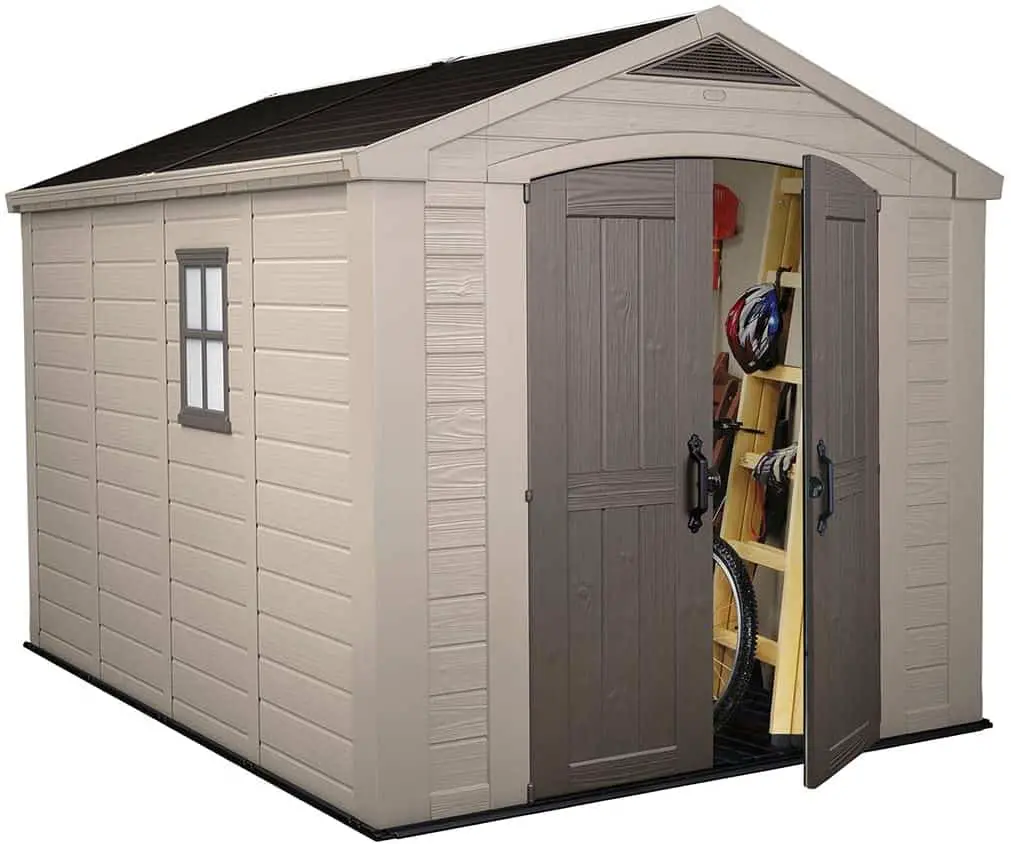
As for the shed platform. All sheds need to be supported on a suitable level platform whether wooden, metal or plastic. This shed base can be made from concrete slabs on a crushed gravel & sand base, or be a solid concrete platform as discussed.
The cheapest option for a base is a simple levelled out area with some crushed gravel whacked down, however this is not ideal especially if a wooden floor is put on top of it as vermin are likely to bury under the shed and take up residence!
Potential shed usage
Lastly, we look at the use you have for the shed. There is no need to buy a huge wooden garage if all you want to do is store a few garden hand tools in it. Conversely you do not want to buy a shed that is too small for your needs.
If you intend to use the shed for potting up your plants, then you will have to choose a potting shed that has sufficient window space for light to encourage your seedlings.
If you are storing valuable equipment then a secure shed would be your choice rather than a cheap flimsy affair that is easily broken into.
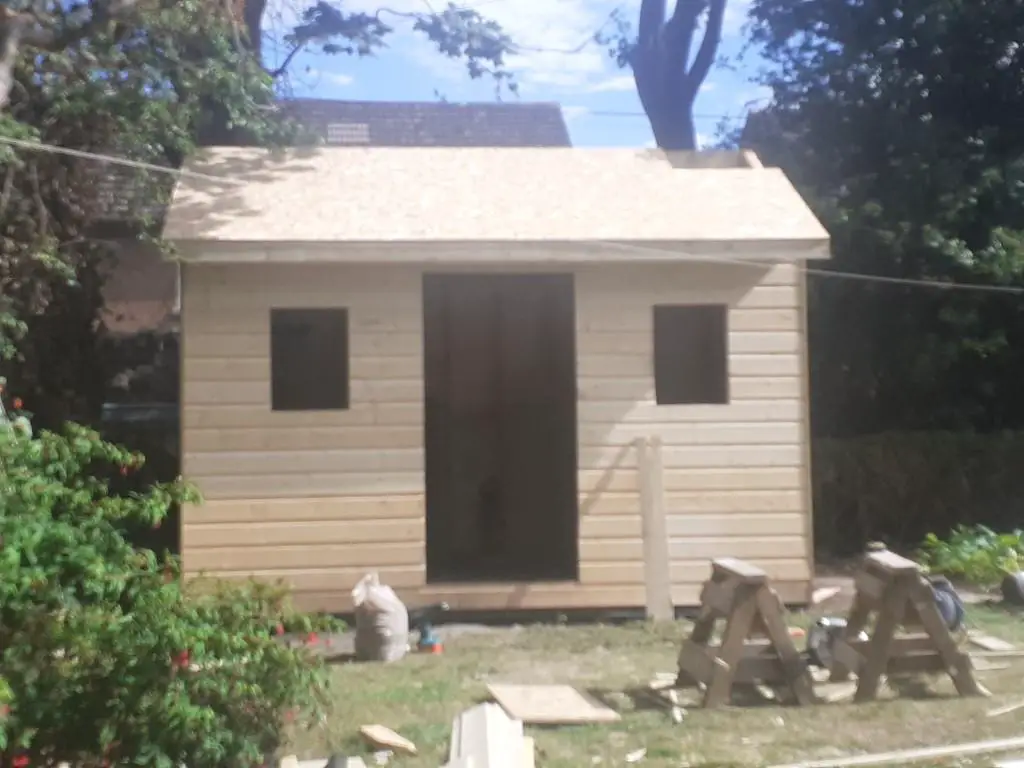
If you are choosing a shed to double up as a workshop then a wooden shed may suit you better, as they are better for hanging tools on and will not cause damaging condensation in the same way that a metal shed may do.
In the same way if you have a sit-on mower or quad bike, make sure you choose a garage with doors wide enough for you to get the machine in the shed without causing damage to doors etc. Also it has to be wide enough for you to work freely around the area when the machine is stored.
A home office garden shed has become a real interest with all the pandemic restrictions lately. Working from home has become the norm for many, but what do you do if you do not have enough room in the house? You buy a shed to convert to a home office – or build your own home office!
Building your own shed or even home office is a viable option if you have even the most basic of DIY skills – as long as you follow good shed plans and keep to the script! Check out the package below for some amazing examples of DIY sheds.
Final Thoughts:
As you can see, there is a lot to consider when choosing a garden shed, but fundamentally it all boils down to these 5 things.
- Location
- Security
- Construction type
- Budget
- Potential use.
Whilst not necessarily in that order, I believe that if you consider all these points you will come up with the right garden shed to suit your needs.

